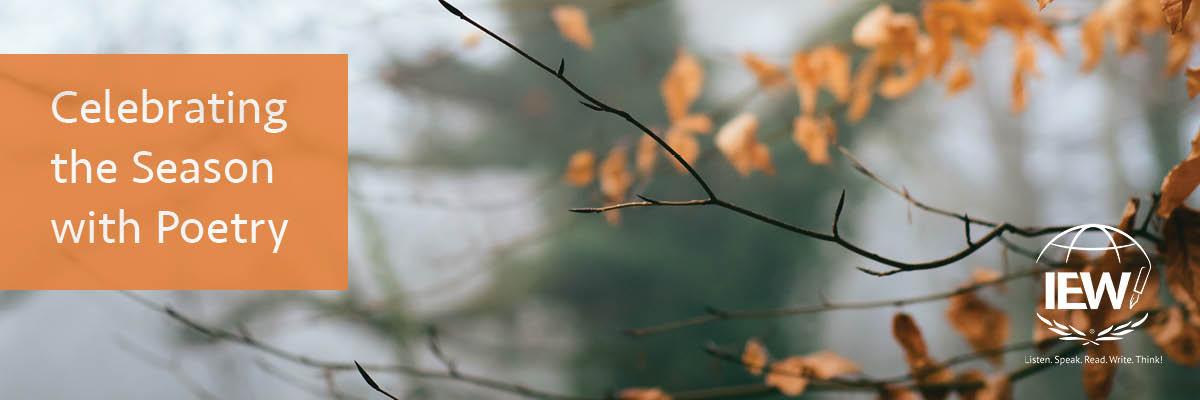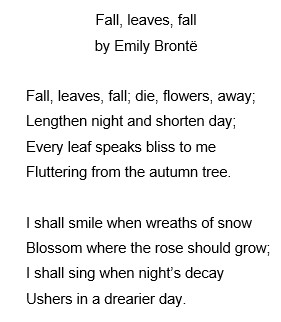
When people hear the name Emily Brontë, most of them connect her with her one and only novel, Wuthering Heights. Lesser known are her poems, one of which we are featuring in this blog post. Brontë grew up and lived with her sisters, Anne (The Tenant of Wildfell Hall) and Charlotte (Jane Eyre), and her brother Branwell. The family occupied the parsonage in Haworth, a small town in West Yorkshire, England. In that area of the world, Emily would have been well acquainted with cooler weather. We hope you enjoy reading this poetic, cheerful expectation of autumn.

The poem, composed of two quatrains, follows this rhyme scheme: AABB CCAA. Many poems that describe fall feel somber. This poem, however, strikes a different chord with readers. Brontë’s imagery is compelling. The speaker revels in the transition of light to dark, of day to night, and of life to death. While readers of poetry should always be cautious about equating the speaker in the poem to the poet herself, this poem feels quite personal. It’s easy to imagine Emily smiling to herself as she watched crimson and gold leaves fluttering and falling from the sky. The poem celebrates fall for itself and not just as the transitional season that invariably leads into death and then back to life. It is a remarkable little piece.
If you would like to explore more of Emily Brontë’s poetry, you can read not only hers but those of her sisters as well by visiting this link. Emily, for reference, used the pen name of Ellis Bell.
|
Jennifer Mauser has always loved reading and writing and received a B.A. in English from the University of Kansas in 1991. Once she and her husband had children, they decided to homeschool, and she put all her training to use in the home. In addition to homeschooling her children, Jennifer teaches IEW classes out of her home, coaches budding writers via email, and tutors students who struggle with dyslexia. |

